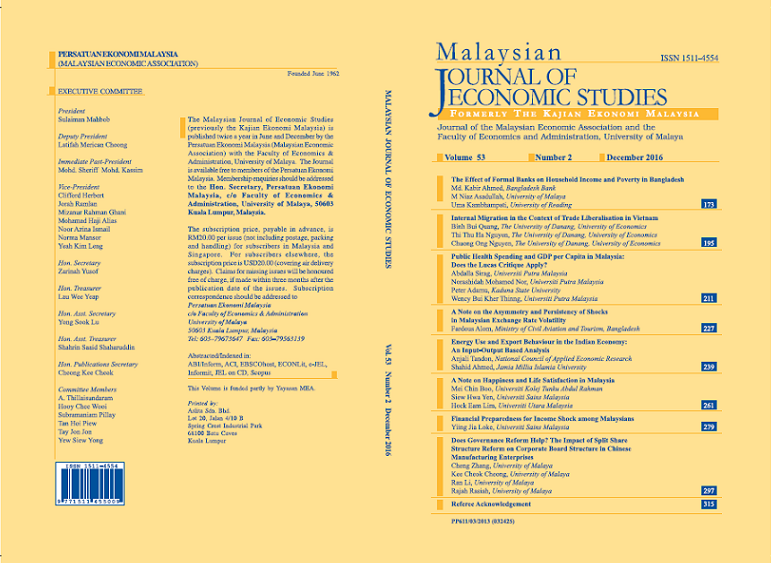The Effect of Formal Banks on Household Income and Poverty in Bangladesh
Keywords:
Financial development, formal banks, microfinance, NGOs, povertyAbstract
This paper examines the effects of rural financial development, measured in terms of number of formal bank branches in a sub-district, on household poverty in Bangladesh. The analysis is based on a hybrid data set which we created by combining sub-district level information on bank branch availability and the presence of microcredit providers with household level information on poverty, assets, expenditure and so on. The latter was obtained from the nationally representative Household Income Expenditure Survey (HIES) for the year 2005 which sampled 6,400 rural households. We studied the effect of formal banks by estimating Least Square (OLS) regression models of household per capita expenditure and sub-district level headcount poverty. We found a statistically significant and positive relationship between the number of formal bank branches and household per capita expenditure and a negative association with the proportion of people living below the poverty line. These results were very robust to differences in household assets, occupation and demographic structure. In addition, differential access to NGO programs in the village and microfinance schemes at the sub-district level did not wash out the effects of formal banks on household expenditure. Formal banking coverage also remained negatively associated with headcount measures of poverty at the subdistrict level even after controlling for remoteness, vulnerability to natural disasters and access to microfinance schemes. Overall, our results suggest that policies that improve access to financial services (e.g. presence of formal banks) in rural areas can complement government efforts to reduce poverty and improve rural welfare in developing countries.

